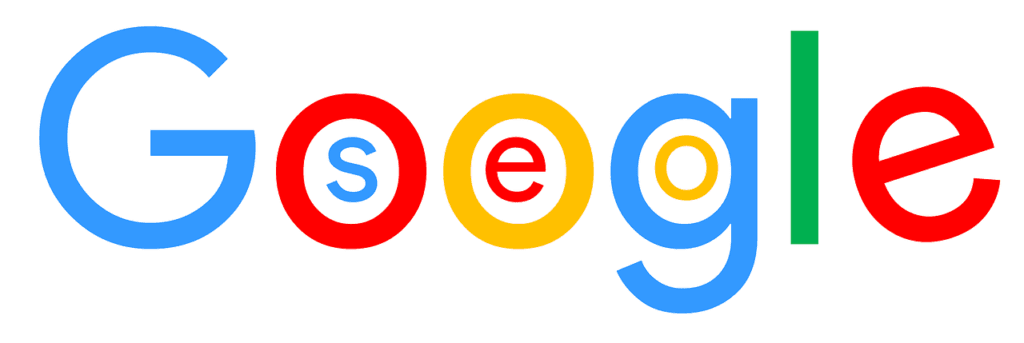(This Article has been revised, edited and added to, by Poulomi Chakraborty.)
- The Importance of SEO in the Mortgage Industry
- Setting the Stage: The Current Landscape of the Mortgage Industry
- Objective of the Guide
- Laying the Foundation – Your Website
- Website Design and User Experience (UX)
- Mobile Optimization
- Site Speed and Its Impact on SEO
- The Blueprint of a Successful Mortgage Website
- Prioritizing Content Architecture for Enhanced User Engagement
- Utilizing Advanced Analytics for Continuous Improvement
- Integrating Interactive Elements to Boost Engagement
- Building a Website That Grows With Your Business
- Fortifying Your Digital Foundation: Security and Accessibility as Cornerstones
- Unveiling the Power of Keywords
- Understanding Keyword Intent
- Keyword Research Tools
- Identifying Long-Tail Keywords
- Local SEO and Keyword Optimization
- Competitor Keyword Analysis
- Crafting a Keyword Strategy That Speaks to Your Audience
- The Science and Art of Keyword Optimization
- Integrating Keywords Beyond the Surface
- Leveraging Local Keywords for Geographic Targeting
- Elevating Your SEO Game with Strategic Keyword Use
- Content Creation – Crafting Content That Resonates
- Understanding Your Audience
- Content Types and Formats
- Keyword Integration in Content
- Content Structure
- Content Optimization for Mobile Devices
- The Art of Storytelling in Mortgage Content
- Creating Value through Educational Content
- Leveraging Interactive and Multimedia Content
- Personalization: The Frontier of Content Marketing
- Building a Future-Proof Content Strategy
- Conclusion: Crafting a Future of Unparalleled Success
In today’s hyper-digital era, the battleground for mortgage businesses has transcended beyond physical offices to the first page of Google search results. It’s no longer just about the curb appeal of your brick-and-mortar establishment; it’s about how digitally visible you are to your potential customers. The buzzword that stands tall in this digital revolution is “SEO,” or Search Engine Optimization, a potent tool to elevate your mortgage business to unprecedented heights.
The Importance of SEO in the Mortgage Industry

In the mortgage landscape, the competition is fierce, and the stakes are high. Digital prominence has become synonymous with trust and reliability. SEO, a strategy grounded in enhancing a website’s visibility on search engines, emerges as the linchpin in crafting a digital presence that is not just strong but unparalleled. By tailoring your website to meet the best practices outlined by search engines, particularly Google, you pave the way for increased visibility, a surge in organic traffic, and, ultimately, a higher conversion rate.
Unleashing SEO’s Potential in the Mortgage Industry
The realm of mortgage services, inherently competitive and ever-evolving, necessitates a strategic pivot towards digital mastery. SEO, or Search Engine Optimization, emerges not just as a tool, but as a pivotal strategy to amplify your presence in this digital age. Its importance transcends basic visibility, embedding itself into the very fabric of digital trust and user engagement. As mortgage businesses vie for the top spot in Google’s search results, understanding and leveraging SEO’s full spectrum of benefits becomes a critical mission.
The Symbiosis of SEO and Brand Authority
In the digital mortgage landscape, your brand’s authority directly influences consumer trust and decision-making. SEO strategies tailored to elevate your online presence inherently bolster this authority, crafting a narrative of reliability and expertise. This digital endorsement, hard-earned through consistent ranking at the top of search results, is invaluable. It’s a testament to your business’s relevance and credibility in answering the needs of your audience. Thus, strategic SEO is not just about visibility—it’s about building a foundation of trust that attracts and retains clients.
SEO: A Gateway to Understanding Your Market
Beyond the algorithms and rankings, SEO offers an unparalleled window into your target market’s behaviors, preferences, and needs. By analyzing search trends, keyword volumes, and user engagement metrics, mortgage startups can gain insights into what potential clients are seeking. This data-driven approach allows for the refinement of not only your SEO strategies but your entire marketing and product development efforts. Tailoring your offerings to meet the identified needs not only improves your SEO performance but enhances overall customer satisfaction and conversion rates.
Crafting a User-Centric SEO Strategy
The cornerstone of a successful SEO strategy in the mortgage industry lies in its user-centric approach. Google’s algorithms are increasingly sophisticated, prioritizing sites that offer genuine value, easy navigation, and engaging content. Therefore, optimizing your website for SEO is synonymous with optimizing for your prospective clients. From developing informative, easily digestible content that addresses common queries and concerns to ensuring your site’s mobile responsiveness and loading speed, every aspect of SEO is an opportunity to enhance the user experience.
Navigating the Competitive Landscape with Strategic SEO
In the fiercely competitive mortgage industry, a well-executed SEO strategy serves as your compass. It not only directs traffic to your site but steers you clear of the common pitfalls that many startups face. By focusing on niche-specific keywords, creating value-driven content, and building a robust backlink profile, you can outmaneuver larger competitors. This strategic positioning in search rankings is not merely about being seen—it’s about being recognized as the go-to resource for mortgage advice, services, and products.
The Strategic Imperative of SEO
In conclusion, the integration of SEO into your digital marketing strategy is not just important—it’s imperative for survival and success in the mortgage industry. It offers a multi-faceted advantage, from building brand authority and understanding market dynamics to crafting a user-centric online experience. For startup founders in the mortgage sector, embracing SEO is embracing a pathway to digital prominence, customer engagement, and ultimately, business growth. As you embark on this SEO journey, remember that it’s a continuous process of learning, adapting, and optimizing. The digital landscape is ever-changing, and so too should be your approach to SEO.
Setting the Stage: The Current Landscape of the Mortgage Industry

As we stand in 2023, the mortgage industry is a fluctuating market with ever-evolving consumer behaviors. The pandemic has accelerated the digital transition, making it imperative for businesses to establish a robust online presence. Customers today prioritize ease of access and a wealth of information at their fingertips over traditional approaches to choosing a mortgage business. Thus, it becomes a prerequisite to understand and adapt to the changing dynamics, to hold your ground and rise to the zenith in this competitive industry.
Embracing Change: The Digital Revolution in the Mortgage Sector
The mortgage industry is undergoing a significant transformation, propelled by digital innovation and changing consumer expectations. This shift is not just about adopting new technologies but about rethinking how mortgage businesses engage with their audience. Today’s consumers are digitally savvy; they expect seamless online experiences, comprehensive information at their fingertips, and personalized services. As a startup founder in the mortgage sector, understanding and adapting to these expectations is crucial. Your digital strategy should not only focus on attracting visitors through SEO but also on converting them into loyal customers by meeting their needs more effectively than your competitors.
The Power of Data Analytics in Understanding Consumer Behavior
In the heart of the digital transformation lies the ability to harness data analytics for a deeper understanding of consumer behavior. This involves collecting and analyzing data on how potential clients interact with online mortgage content, what they search for, and the problems they seek to solve. This intelligence is invaluable in tailoring your SEO and content strategy to align with consumer needs and search intent. By leveraging data analytics, mortgage startups can uncover trends, predict customer behavior, and create more targeted, effective marketing campaigns. This proactive approach enables you to stay ahead of industry shifts and position your business as a forward-thinking leader.
Building a Resilient Online Presence
In today’s competitive mortgage landscape, having a resilient online presence is paramount. This goes beyond having a website and social media profiles. It’s about creating a digital ecosystem that supports your brand across multiple platforms and touchpoints. Your online presence must be agile, able to adapt to changes in search engine algorithms, consumer preferences, and the competitive environment. This agility is achieved through continuous optimization of your SEO strategies, regular content updates, and active engagement with your audience on social media and other platforms. By building a resilient digital ecosystem, you ensure that your mortgage business remains visible, relevant, and accessible to your target audience, regardless of the evolving digital landscape.
Leveraging Technology for Competitive Advantage
Technology is a key driver of innovation in the mortgage industry, offering startups numerous opportunities to gain a competitive edge. From AI-driven chatbots that provide instant customer service to automated marketing platforms that deliver personalized content, technology can enhance every aspect of the mortgage experience. By integrating advanced tech solutions into your operations, you can streamline processes, improve customer engagement, and optimize your SEO and content strategies. This not only improves efficiency but also provides a richer, more personalized experience for your clients, setting your business apart in a crowded market.
The Path Forward in the Digital Mortgage Industry
As the mortgage industry continues to evolve, startup founders must remain nimble, innovative, and customer-focused. The digital landscape offers unprecedented opportunities to connect with your audience, understand their needs, and deliver value in new and exciting ways. By embracing the digital revolution, leveraging data analytics, building a resilient online presence, and integrating technology into your operations, you can navigate the challenges of the current mortgage landscape and lead your business to success. Remember, in the digital age, the path forward is not just about adapting to change—it’s about leading it.
Objective of the Guide
This comprehensive guide aims to be your steadfast companion in navigating the intricate maze of SEO. Whether you are a seasoned mortgage business owner looking to refine your strategies or a newcomer eager to carve out a space in the digital sphere, this guide holds the key to unlocking the potential of SEO.
Over the next sections, we will unravel the step-by-step strategies to fundamentally optimize your website, build content that resonates with your target audience, and create a digital footprint that speaks volumes about your credibility and expertise. From delving deep into the nuances of on-page and off-page SEO to exploring the uncharted territories of technical SEO, this guide is crafted to be a beacon of light in your SEO journey, guiding you towards the pinnacle of Google rankings.
As we embark on this enriching journey, we invite you to foster a spirit of learning and exploration, as we demystify the world of SEO, one step at a time. Welcome to the roadmap to your success, a step-by-step manual to propel your mortgage business to the top of Google’s rankings, where opportunities await, and success is but a milestone away.
Laying the Foundation – Your Website

A strong house stands on a solid foundation, and so does your website in the digital landscape. To echo with prominence on search engines, a meticulous foundation is imperative. In this chapter, we walk you through the indispensable facets of a website foundation that not only holds strong but promises growth.
Website Design and User Experience (UX)
In the digital realm, your website is the first impression users will have of your business. It goes without saying that a well-designed website can be a game-changer. Let’s delve into the essentials:
- Responsive Design: Ensure your website adjusts seamlessly across various devices, providing an optimal viewing experience.
- Intuitive Navigation: Simplify the user’s journey by offering intuitive navigation, allowing them to find information quickly and efficiently.
- Consistent Branding: Maintain a consistent branding throughout, enhancing recognition and fostering trust.
- Call-to-Action (CTA) Buttons: Strategically place CTA buttons to guide users to take desirable actions.
Mobile Optimization
As a substantial number of users access websites via smartphones, mobile optimization is no longer optional but mandatory. Here’s your checklist:
- Responsive Design: Yes, it’s so essential we mentioned it twice! Your website must look and function perfectly on mobile devices.
- Fast Loading Speed: A mobile user’s attention span is short. Ensure your website loads swiftly to retain potential customers.
- Simple Navigation: Adopt a mobile-first approach in designing navigation, making it thumb-friendly.
- Click-to-Call Buttons: Facilitate easy communication by incorporating click-to-call buttons, connecting your users to you in a single tap.
Site Speed and Its Impact on SEO
A slow-loading website can be a deal-breaker. It not only frustrates users but also doesn’t sit well with Google. Understanding this, focus on:
- Optimizing Images: Reduce file sizes without compromising quality to enhance loading speed.
- Minimizing Code: Clean up your website’s backend by getting rid of unnecessary code.
- Leveraging Browser Caching: Store static files in the user’s browser to quicken subsequent load times.
- Using a Content Delivery Network (CDN): Employ a CDN to distribute the load, saving bandwidth and hastening access for your users.
The Blueprint of a Successful Mortgage Website
In the digital age, your website serves as the cornerstone of your business’s online presence. A well-crafted website goes beyond aesthetics; it’s a strategic tool designed to engage users, convey your brand’s value proposition, and convert visitors into leads. For mortgage startups, this means developing a site that not only ranks well on search engines but also addresses the unique needs and concerns of your target audience. Achieving this requires a deep understanding of both your market and the technical aspects of SEO, blending them together to create a platform that resonates with potential clients and search algorithms alike.
Prioritizing Content Architecture for Enhanced User Engagement
The structure of your website’s content plays a crucial role in both user engagement and SEO. A well-planned content architecture ensures that users can easily navigate your site, find the information they’re looking for, and take the desired actions. This involves organizing your content in a logical manner, with clear categories and a hierarchy that reflects the importance of different topics. Each page should be crafted with a specific purpose in mind, whether it’s to inform, persuade, or convert. By aligning your content architecture with user intent, you create a smoother journey for your visitors, reducing bounce rates and improving the chances of conversion.
Utilizing Advanced Analytics for Continuous Improvement
In the quest for digital dominance, the role of advanced analytics cannot be overstated. Tools like Google Analytics and heat mapping software offer profound insights into how users interact with your website. This data allows you to make informed decisions about design, content, and functionality, continuously refining your site to better meet the needs of your audience. For instance, by analyzing user behavior, you can identify pages with high exit rates and optimize them for better engagement. Similarly, heat maps can reveal which elements of a page draw the most attention, informing your design and content placement strategies. Leveraging analytics in this way ensures your website remains dynamic, evolving with your audience’s preferences and the changing SEO landscape.
Integrating Interactive Elements to Boost Engagement
In the competitive mortgage industry, interactive elements can set your website apart, making it more engaging and informative for potential clients. Tools such as mortgage calculators, interactive maps of property markets, or chatbots that provide instant answers to common questions can significantly enhance the user experience. These elements not only make your site more useful to visitors but also increase the time they spend engaged with your content—a factor that can positively impact your SEO rankings. Additionally, interactive features can act as lead generation tools, offering valuable insights into your users’ interests and needs.
Building a Website That Grows With Your Business
The digital foundation of your mortgage business is not a static entity but a dynamic platform that must evolve in response to changes in technology, consumer behavior, and the competitive landscape. As you lay the groundwork for your website, remember that it is both a reflection of your brand and a tool for engaging with your target audience. By focusing on strategic content architecture, leveraging analytics for continuous improvement, and integrating interactive elements, you can create a website that not only ranks well on Google but also drives conversions and supports the growth of your business. In this digital journey, your website is the beacon that guides potential clients to your doorstep, making it imperative to invest in its design, functionality, and content from the outset.

Related: Check out our free SEO suite

Fortifying Your Digital Foundation: Security and Accessibility as Cornerstones
Security and accessibility should be your utmost priority to build a trustworthy relationship with your users and to rank well on Google:
- SSL Certificate: Install an SSL certificate to move your website to HTTPS, securing data transfer and boosting SEO.
- ADA Compliance: Ensure your website is accessible to all users, including those with disabilities, by adhering to ADA guidelines.
- Clear URL Structure: Structure URLs clearly and logically, facilitating easy navigation and better understanding by search engines.
- XML Sitemap: Create an XML sitemap to help search engines understand the structure of your website better, aiding in more efficient indexing.
Cultivating Trust Through Enhanced Security Measures
In the digital era, where data breaches and cyber threats are rampant, ensuring the security of your mortgage website is paramount. It not only protects sensitive customer information but also signals to your visitors that your business is trustworthy and reliable. Implementing robust security measures such as SSL certificates is the first step in securing your website’s data transfer, but this is merely the foundation. Delving deeper, consider advanced encryption methods and regular security audits to identify and mitigate potential vulnerabilities. Educate your team about cybersecurity best practices, and make security a part of your company culture. Remember, trust is the currency of the digital world, and by prioritizing security, you invest in building long-lasting relationships with your clients.
Enhancing User Experience Through Universal Design
Accessibility is not just a regulatory requirement; it’s a strategic approach to widen your reach and serve all potential clients, regardless of their physical or cognitive abilities. Adopting universal design principles ensures that your website is navigable and understandable for everyone, including people with disabilities. This involves implementing features like keyboard navigation, alternative text for images, and transcripts for video content. Moreover, consider the use of assistive technologies and ensure compatibility to enhance the user experience for a broader audience. By making your website more accessible, you not only comply with legal standards but also demonstrate your commitment to inclusivity, which can distinguish your mortgage business in a competitive landscape.
Leveraging Technology for Compliance and Competitiveness
Staying abreast of the latest technological advancements can significantly impact your website’s security and accessibility. Use automated tools to regularly scan your site for accessibility issues and potential security threats. Incorporate AI and machine learning algorithms to predict and prevent cyber-attacks before they occur. Additionally, cloud-based solutions can offer scalable and secure hosting environments that adapt to your business needs. In the realm of accessibility, technology such as voice recognition and natural language processing can make your website more navigable for users with visual impairments. Investing in these technologies not only ensures compliance with security and accessibility standards but also positions your mortgage business as a forward-thinking, customer-centric entity.
Building a Secure and Accessible Website: A Continuous Journey
Creating a website that is both secure and accessible is an ongoing process that requires constant attention and adaptation to new threats and standards. Regularly update your website’s security protocols and accessibility features to align with current best practices and regulations. Engage with your users to gather feedback on their experiences and make adjustments as necessary. Additionally, consider partnering with security and accessibility experts to stay ahead of the curve and ensure that your website remains a safe and welcoming space for all visitors.
The Strategic Advantage of a Secure and Accessible Website
The importance of building a secure and accessible website cannot be overstated. It’s a critical aspect of establishing trust, expanding your audience, and safeguarding your online presence against the ever-evolving landscape of digital threats. For mortgage business startups, taking a proactive stance on security and accessibility is not just about risk management; it’s about creating a competitive advantage. By implementing robust security measures, adhering to accessibility standards, and leveraging technology, you can build a website that reflects the integrity and inclusiveness of your brand. Remember, in the digital age, your website is often the first point of contact with potential clients, making it imperative to prioritize these foundational aspects from the outset.
Unveiling the Power of Keywords

In the SEO cosmos, keywords serve as the compass that directs potential clients to your mortgage business. Identifying and integrating the right keywords can elevate your online presence exponentially. In this section, we will elucidate the intricate process of keyword research, establishing a path of seamless connectivity between your business and prospective customers.
Understanding Keyword Intent
Before we step into keyword research, it is pivotal to comprehend the intent behind keywords. Here’s how you can dissect keyword intent:
- Informational: Keywords used by users seeking information, generally adopting a who, what, why approach.
- Navigational: Keywords indicating the user is looking for a specific website or page.
- Transactional: Keywords used by users ready to make a purchase or avail of a service.
- Commercial: Keywords adopted by users looking to make a purchase shortly and are in the process of comparing options.
Keyword Research Tools
Embarking on the keyword research voyage requires a set of tools to guide you. Here, we introduce you to the top tools in the industry:
- Google Keyword Planner: A free tool by Google offering insights into keyword volumes and competition.
- SEMrush: A comprehensive tool providing detailed keyword analytics and competitive analysis.
- Ahrefs: A tool famed for its extensive keyword database and competitor analysis features.
- Moz: A tool providing keyword suggestions along with difficulty scores and potential.
Identifying Long-Tail Keywords
Long-tail keywords, though less competitive, can be your golden ticket to reaching a more targeted audience. Learn to identify these keywords:
- Specificity: Long-tail keywords are generally more specific, addressing niche queries.
- Low Competition: These keywords face lesser competition, offering you a better chance to rank high.
- High Conversion Rates: Users employing long-tail keywords are often further down the sales funnel, promising higher conversion rates.
Local SEO and Keyword Optimization
For a mortgage business, local SEO holds prominence. Here we uncover the tactics to master local SEO through keyword optimization:
- Geo-Targeted Keywords: Incorporate keywords that specify your location, connecting with local clients effectively.
- Local Business Listings: Ensure your business appears in local listings, coupled with relevant keywords to enhance visibility.
- Local Content: Create content that resonates with local events and news, integrating local keywords organically.
Competitor Keyword Analysis
Standing tall in a competitive landscape demands an understanding of your competitors’ keyword strategies. Here is how you can conduct competitor keyword analysis:
- Identifying Competitors: List down your top competitors to initiate the analysis.
- Keyword Gap Analysis: Utilize tools like SEMrush and Ahrefs to perform a keyword gap analysis, identifying keywords your competitors rank for, but you don’t.
- Competitor Content Analysis: Analyze the content strategy adopted by your competitors for keyword optimization, deriving actionable insights.
Crafting a Keyword Strategy That Speaks to Your Audience
In the competitive mortgage sector, understanding the language and queries of your potential clients is crucial for SEO success. Crafting a keyword strategy goes beyond mere research; it’s about empathizing with your target audience’s journey from awareness to decision-making. Begin by delving into the mind of your ideal customer—what are their concerns, questions, and goals when searching for mortgage options? This empathetic approach allows you to develop a keyword strategy that not only improves your search rankings but also resonates deeply with your audience, making your content invaluable and engaging.
The Science and Art of Keyword Optimization
Keyword optimization is a delicate balance between science and art. On one hand, it involves technical aspects such as search volume analysis, competition assessment, and the strategic placement of keywords within your content. On the other hand, it requires a creative touch to integrate these keywords naturally, ensuring that your content remains engaging and informative. This balance is critical in the mortgage industry, where the right keyword strategy can attract potential clients at various stages of their journey, from those seeking general mortgage information to those ready to apply.
Integrating Keywords Beyond the Surface
While integrating keywords into your website’s text is fundamental, modern SEO practices demand a more holistic approach. Consider embedding your keywords in meta tags, ALT text for images, and even in your website’s structure through URL slugs and navigation elements. However, the power of keywords extends even further into the realm of voice search and question-based queries, reflecting the growing trend of using digital assistants for internet searches. Tailoring your keyword strategy to include conversational phrases and questions can significantly enhance your visibility in this evolving search landscape.
Leveraging Local Keywords for Geographic Targeting
In the mortgage industry, the importance of local searches cannot be overstated. Prospective clients often look for solutions within their geographic area, making local keywords an invaluable asset in your SEO arsenal. Incorporating geo-specific keywords into your strategy not only improves your visibility in local search results but also attracts a more targeted audience likely to convert. This approach involves not just including city or region names but also embracing local slang, landmarks, and community names to fully capture the local search intent.
Elevating Your SEO Game with Strategic Keyword Use
The strategic use of keywords is foundational to achieving SEO success in the mortgage industry. By understanding your audience, mastering the balance between technical optimization and natural integration, expanding keyword application, and emphasizing local search, you can significantly enhance your online visibility and attract more qualified leads. Remember, keyword strategy is not a one-time effort but a dynamic component of your SEO campaign that requires ongoing refinement and adaptation. Stay attuned to changes in search behavior and market trends to keep your keyword strategy aligned with your audience’s needs and preferences. Through meticulous research, creative integration, and continuous optimization, your mortgage business can harness the full power of keywords to climb to the top of Google’s search results.
Content Creation – Crafting Content That Resonates

Content is unequivocally the king when it comes to SEO. Crafting content that is not only informative but also engaging is the keystone to skyrocketing your mortgage business’s online presence. In this chapter, we will unfold the nuances of creating content that stands tall in the competitive landscape.
Understanding Your Audience
Before the pens hit the paper, understanding your audience is pivotal. Here’s how you can map out your audience landscape:
- Persona Creation: Craft detailed buyer personas to understand and address the specific needs of your various audience segments.
- Surveys and Feedback: Utilize surveys and feedback forms to gauge your audience’s expectations and preferences.
- Analytics: Dive deep into analytics to understand the behavior and preferences of your audience.
Content Types and Formats
Venturing into content creation demands an understanding of the various formats at your disposal. Let’s delve into the predominant ones:
- Blogs and Articles: The cornerstone of content marketing, offering a canvas to paint detailed narratives and share insights.
- Infographics: A visually appealing format that condenses information into easy-to-digest graphical representations.
- Videos: A dynamic format to engage users with informative and captivating visuals.
- Podcasts: An auditory format allowing you to connect with your audience through engaging discussions and interviews.
Keyword Integration in Content
Integrating keywords organically into your content can pave the way for higher rankings. Here’s your guideline:
- Natural Integration: Ensure keywords are integrated naturally, maintaining the flow and readability of the content.
- Keyword Density: Maintain an optimal keyword density to avoid over-optimization, which can lead to penalties.
- LSI Keywords: Utilize Latent Semantic Indexing (LSI) keywords to help search engines understand the context of your content better.
- Meta Descriptions and Titles: Incorporate keywords into meta descriptions and titles to enhance visibility on search engine result pages (SERPs).
Content Structure
A well-structured content piece can enhance readability and user engagement. Let’s focus on creating structured content:
- Headings and Subheadings: Employ headings and subheadings to break content into digestible sections, facilitating easy navigation.
- Short Paragraphs: Craft short paragraphs to enhance readability, avoiding large blocks of text.
- Bullet Points and Lists: Use bullet points and lists to present information clearly and concisely.
- Internal Linking: Implement internal linking to guide users to relevant content, enhancing the user experience and SEO.
Content Optimization for Mobile Devices
In a mobile-dominant era, optimizing content for mobile devices is non-negotiable. Here we unfold the strategies:
- Responsive Design: Ensure your content adapts seamlessly to various mobile devices, offering an optimal viewing experience.
- Font Size: Adopt a font size that facilitates easy reading on mobile devices.
- Visual Optimization: Optimize visuals for mobile viewing, ensuring they do not slow down the loading speed.
- Content Layout: Craft a content layout that facilitates easy navigation on mobile devices, enhancing user engagement.
The Art of Storytelling in Mortgage Content
In a world inundated with generic content, storytelling emerges as a powerful tool to captivate and engage your audience. For mortgage businesses, this means weaving narratives that resonate on a personal level, transforming abstract financial concepts into relatable stories. Highlight customer success stories, demystify the mortgage process through real-life scenarios, or share insights on market trends that impact your audience’s daily lives. Storytelling not only enhances engagement but also builds trust and credibility, as it showcases your expertise and empathy towards your clients’ challenges and aspirations.
Creating Value through Educational Content
The journey to homeownership is fraught with complexities and uncertainties. As a mortgage business, positioning yourself as a beacon of knowledge and guidance is invaluable. Create comprehensive guides, FAQs, and how-to videos that simplify the mortgage process for your audience. Focus on delivering actionable advice that empowers your readers, from tips on improving credit scores to strategies for securing the best mortgage rates. By prioritizing educational content, you not only enhance your website’s SEO but also foster a loyal community of informed clients who view your brand as a trusted resource.
Leveraging Interactive and Multimedia Content
Engagement metrics play a crucial role in SEO, and interactive content is a proven way to boost these metrics. Integrate mortgage calculators, interactive maps showing market trends, or quizzes to help users determine the right mortgage product for their needs. Multimedia content, such as videos and podcasts, further diversifies your content strategy, catering to different consumer preferences and increasing the time spent on your website. This multimedia approach not only enriches the user experience but also signals to search engines that your content is valuable and engaging, thereby improving your SEO rankings.
Personalization: The Frontier of Content Marketing
In the digital age, personalization is the key to cutting through the noise. Utilizing data analytics, create content that addresses the specific needs and interests of different segments of your audience. Tailor your messages based on user behavior, geographic location, or stage in the mortgage process. Personalized content not only performs better in terms of engagement and conversion but also enhances user satisfaction by providing relevant, timely information that speaks directly to the individual’s circumstances.
Building a Future-Proof Content Strategy
The mortgage industry’s digital landscape is ever-evolving, with content at the heart of successful SEO and marketing strategies. By embracing storytelling, focusing on educational content, diversifying through interactive and multimedia content, and personalizing your messaging, you can create a content strategy that resonates deeply with your audience. This approach not only elevates your SEO performance but also establishes your brand as a leader in the mortgage industry, trusted for its expertise, empathy, and commitment to empowering clients. Remember, impactful content is not just about visibility; it’s about connection, education, and engagement, paving the way for sustained growth and success in the competitive digital arena.
Conclusion: Crafting a Future of Unparalleled Success
As we stand at the conclusion of this extensive guide, we find ourselves equipped with a trove of strategies, tools, and insights, all designed to elevate your mortgage business to unprecedented heights through adept SEO strategies.
We embarked on this journey with a primer into the SEO world, understanding the bedrock principles that govern this dynamic landscape. We navigated through the multifaceted realms of keyword research, content creation, and link-building strategies, each chapter unraveling deeper layers of SEO mastery. But we did not stop at the conventional avenues. We ventured further, delving into the advanced SEO techniques, touching upon emerging fronts such as voice and predictive search, all poised to redefine the SEO landscape in the coming years.
Read Next:
- 3Ps in Marketing – The New Marketing Mix
- 25 Ways to Get More Views and Engagement on Your Instagram Reels (Fast!)
- 8 Content Amplification Tips to Maximize Lead Generation
- Lead Generation for B2B – In 12 Steps (Use this Strategy Now!)
- Skyrocket Your Email Outreach ROI! Strategies (+Experiments) By 19 Experts




















Comments are closed.